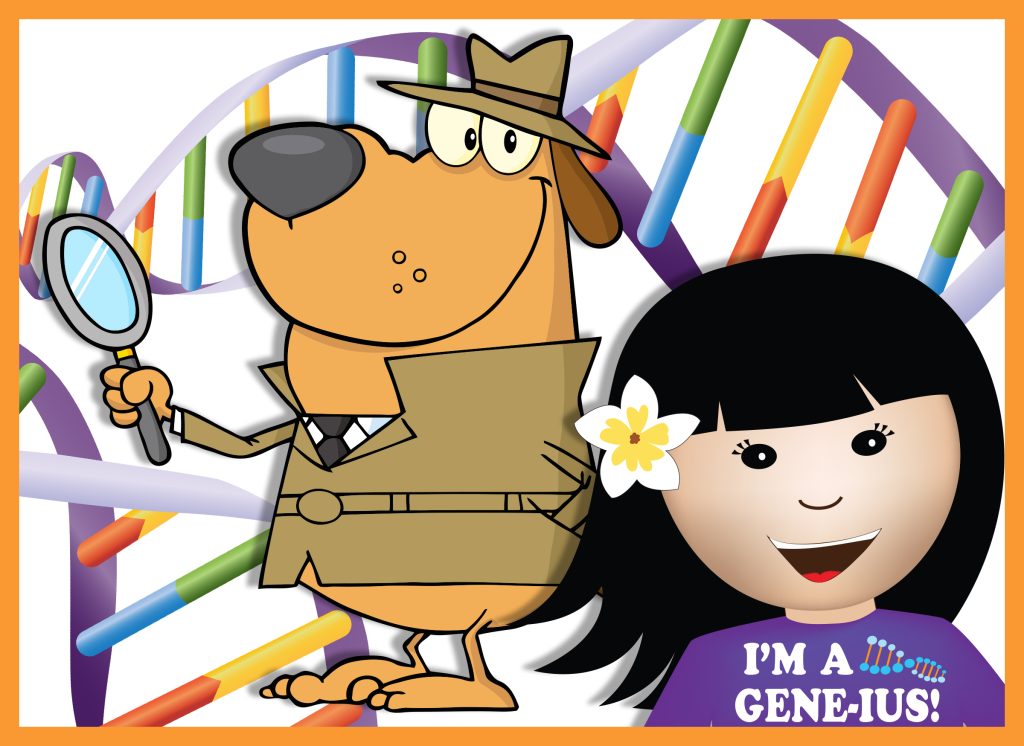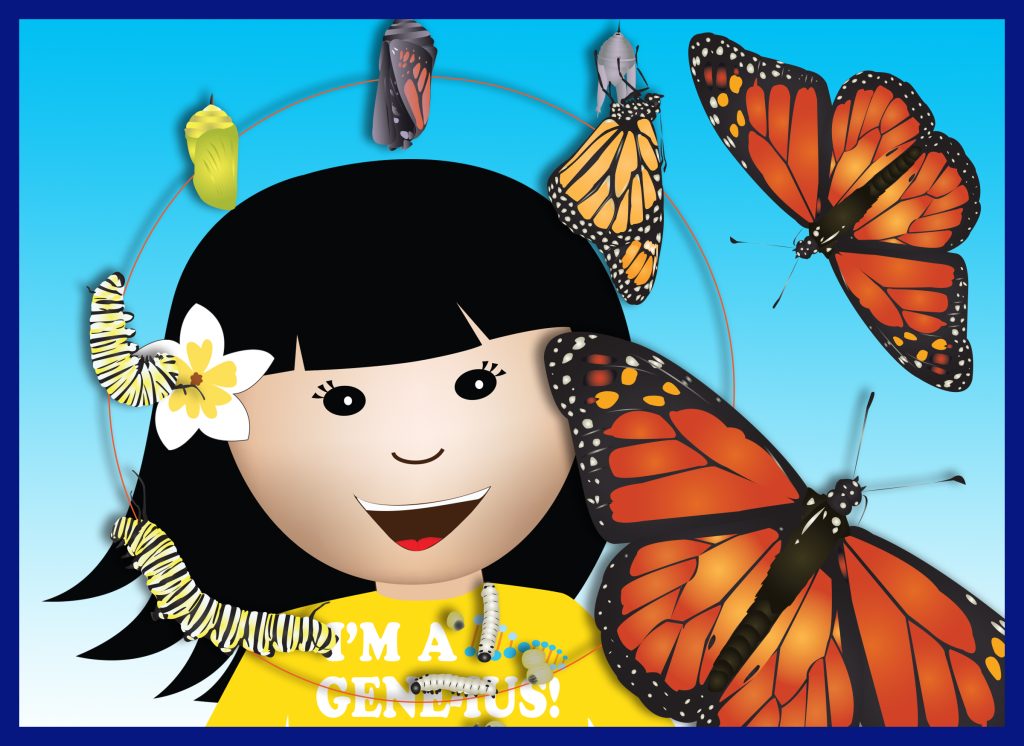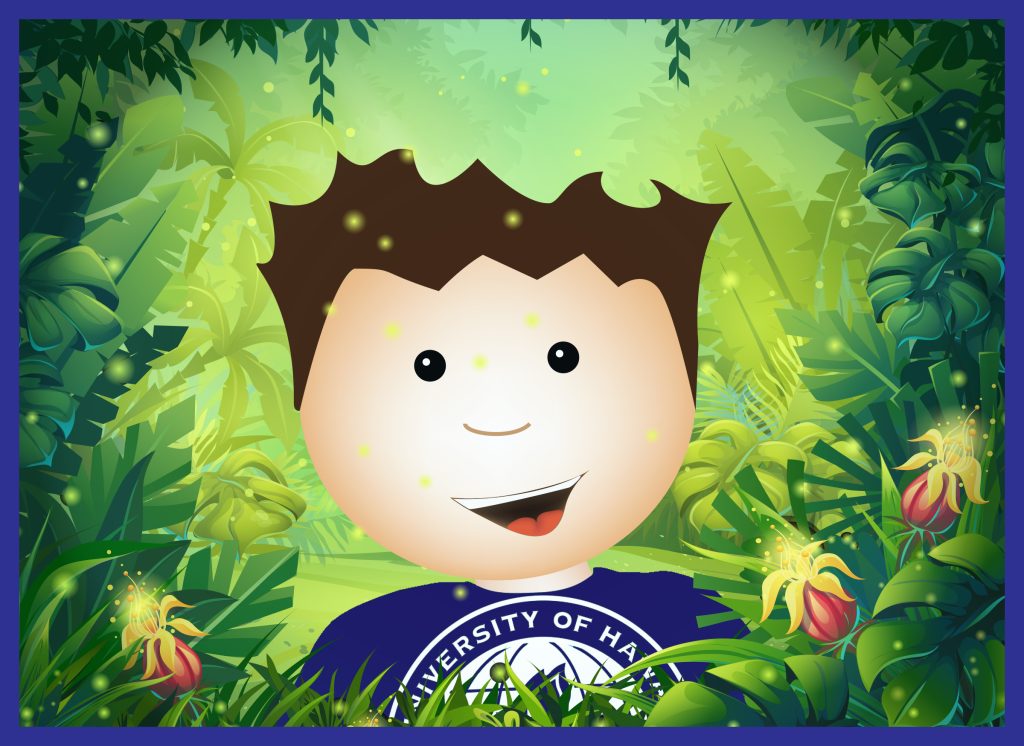
Important Deadlines
Priority Registration for Waitlist: December 6, 2024
Deadline Extended!
NEW Application Deadline: January 10, 2025
or until classes are full
Saturday Gene-iuses
University of Hawaiʻi at Mānoa
3190 Maile Way, St. John 102
Honolulu, Hawaii 96822
University of Hawaiʻi, Mānoa teaching laboratories. We will inform you of your classroom location through email prior to the first session
Parking is available in the upper campus lots and in front of the St. John Building. There is no charge on Saturdays, Sundays, and state holidays.
Parking fees are subject to change at any time. Visit https://manoa.hawaii.edu/commuter/visitors for the latest information
All students will be required to purchase their own lab coat and bring their lab coat to class to participate in the lab. Students and any chaperones will be required to wear covered shoes
We do not accept walk-ins or telephone reservations for the Saturday Gene-ius program. We cannot accept cash and will not honor reservations without payment. Also, payment for all Saturday Gene-ius sessions are non refundable. If you have further questions, please visit our FAQ or email us!
January 18, 2025
10:00 am – 12:00 pm

Oh no! A lost puppy has been found wandering alone. How will you figure out which dog is its mom so that they can be reunited? Will observing the puppy and possible mom’s physical traits be enough? Students will learn how genetic traits are passed down from parents to offspring and how DNA encodes traits of living creatures. Students learn how the 4 letters that make up every DNA sequence get translated to different molecules, eventually leading to the physical traits we can see. Using this DNA “language,” students will begin the investigation to help the lost puppy find its correct mom. Students will build a dog using the genotype and phenotype information they have gathered to understand better the role DNA plays in physical traits. Finally, students will play a game to uncover the correct DNA sequences in each dog to reunite the lost puppy with its mom!
January 25, 2025
10:00 am – 12:00 pm

Have you ever considered what’s so special about Earth? And why we don’t live on Mars? Here is a hint: it’s what makes the Earth green! Plants! Plants provide us with the oxygen we need to breathe. This mission takes an up-close look at photosynthesis and the organelle where it all takes place – the chloroplast! Students will conduct an experiment to see photosynthesis occurring in an Elodea plant using a special dye that changes color when levels of CO2 change. Students will then isolate the pigments from leaves that trap the light energy required for photosynthesis to occur. Finally, students will examine plant cells up close using a microscope to see the cell wall and chloroplasts, the plant pigment!
February 1, 2025
10:00 am – 12:00 pm

What makes a bug an insect? Are spiders insects? Do all insects look the same? It’s time to dive into the world of entomology! Just like an entomologist does, students will examine the wide range of characteristics of insect heads, thoraxes, and abdomens. Students will learn the different strategies insects use to grow and change over time through an interactive game! Students will then craft a mobile to explore the stages of complete metamorphosis! Next, students learn how scientists identify and classify these amazing creatures. Students will end the class by investigating ways in which humans interact with insects and have a chance to taste an insect treat!
February 8, 2025
10:00 am – 12:00 pm

There has been a break-in at a candy store! The suspects all look suspicious – how will we find out who the criminal is? Students will examine three types of evidence (hair, fingerprints, and DNA) to solve a mystery! After being introduced to the crime, students will begin their investigation. First, students learn how fingerprint evidence is gathered, how to identify fingerprint patterns, and lift fingerprints from a crime scene. Next, students learn how to characterize hair using a microscope, view their hair under a microscope, and use the hair found at the crime scene as part of their investigation. Finally, students will analyze DNA sequences uncovered from DNA samples found at the crime scene. Get ready to solve the Candy Crime Scene Case!
February 15, 2025
10:00 am – 12:00 pm

What happens when you mix biology (the study of plants and animals) and technology (the making of tools and machinery) together? You get biotechnology! Scientists who work in biotechnology develop products that make our lives easier. Students will face real issues that the world is dealing with today such as oil spills, drought, and pests, just to name a few, and learn how biotechnology can be part of the solution! Enzymes are a common tool in biotechnology that has allowed scientists to solve many problems. Students will conduct an experiment using an Effervescent Enzyme to observe an enzyme in action. Students will also conduct an activity to understand how DNA paired with a specific enzyme, called a restriction enzyme, can create an incredible biotechnology tool. See how this tool has allowed scientists to find solutions to feeding over 7 billion people on planet Earth!
February 22, 2025
10:00 am – 12:00 pm

You eat food EVERY DAY! What is that food doing inside of your body? How do the choices you make about which foods to eat affect your life? Students will learn the different food groups through an interactive game and why each is important for human nutrition and our health. Through a calorimeter demonstration, students will observe the burning of foods and then calculate the calorie content of each food item. Students will also learn about making good food choices by understanding what calories are and hypothesizing which foods are highest in calories. Students will create and calibrate a simple straw hydrometer and use it to measure the sugar content of several common beverages. Which beverage do you think will be the most surprising?!
March 1, 2025
10:00 am – 12:00 pm

What do we know about dinosaurs? What can we know? Learn about different kinds of fossil evidence and what each can and cannot tell us about extinct animals. Students will become paleontologists and piece together dinosaur ‘fossils’ puzzles and collect information about extinct animals from their bones, skulls, and teeth. What can you infer from your observations? Students will then put their critical thinking skills to the test and make inferences on dinosaur behavior based on images of real dinosaur tracks. Finally, students will play a board game that models evolution. See how mutation and selection can change a population of animals over time!
March 8, 2025
10:00 am – 12:00 pm

Weather and climate are sometimes hard to separate. This mission will help students differentiate weather and climate, learn about some of the drivers of climate patterns, and consider some of the effects of climate change on the planet. First, students will observe what happens when you add cold water to warm water to learn how convection currents distribute heat across the Earth, creating climate patterns! Students will measure and calculate the amount of solar radiation reflected by several different surfaces using a lux meter and learn how this plays a role in climate change and ties into convection currents. Finally, students will create a 3D map of the different climate zones on Earth.
March 15, 2025
10:00 am – 12:00 pm

You may have already learned that animals have to adapt to their environment. For example, why do you think giraffes have such long necks?! But, it’s not just animals that must adapt, plants need to adapt too! Just think about all of the different kinds of plants in the world! In this mission, students will first learn the different parts of a flower during a hibiscus dissection. Through an interactive game, students think critically about form and function of different flowers and explore different pollination strategies. Finally, students will use their knowledge of climate zones from Mission 8 to create plants that have the best adaptations to survive in their surrounding climate.
* Please note that some lessons may be subject to change due to product availability *
© 2024 College of Tropical Agriculture and Human • 3050 Maile Wy • Honolulu, HI 96822
UH Manoa | UH System | Accessibility | Privacy | Terms of Use